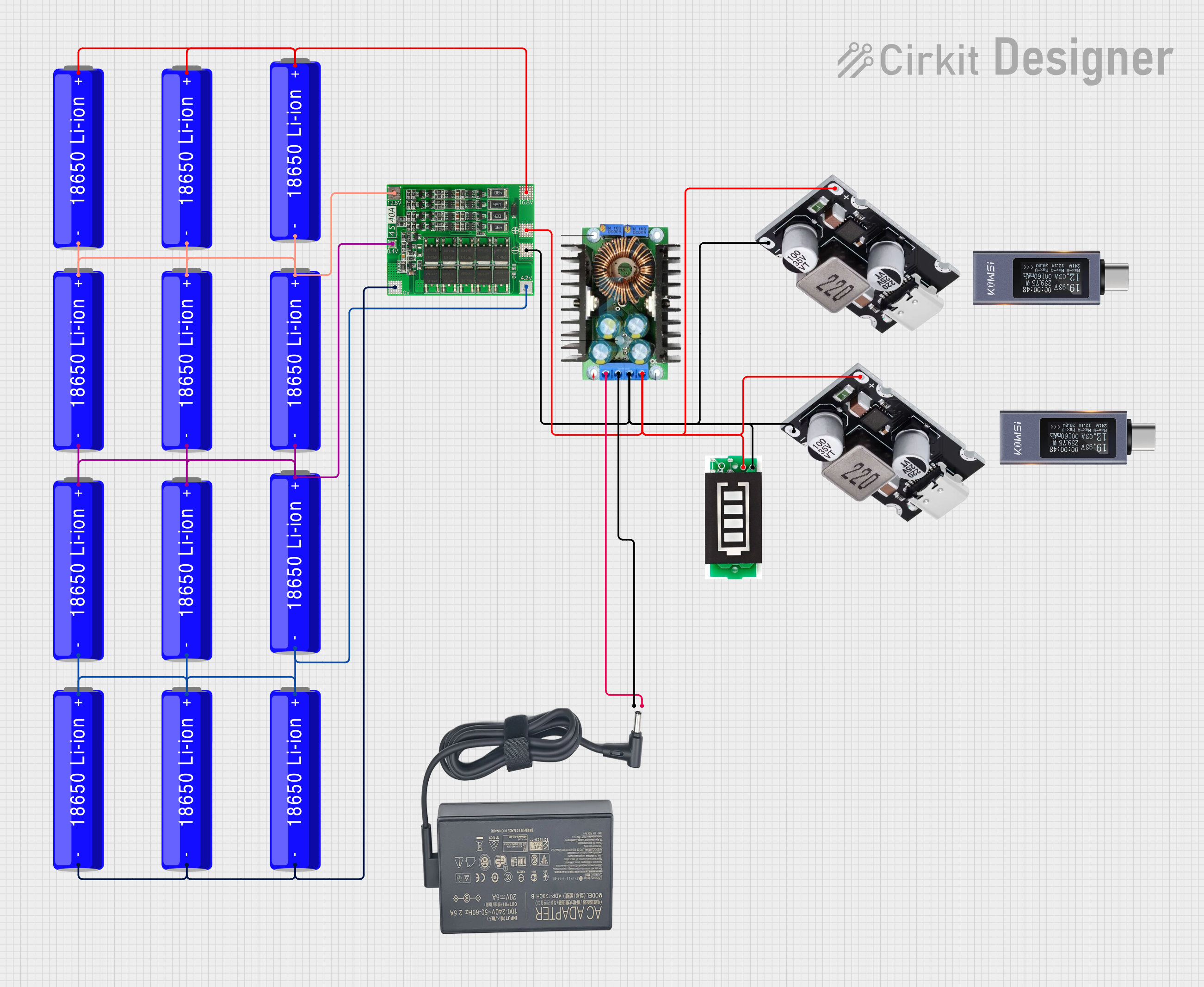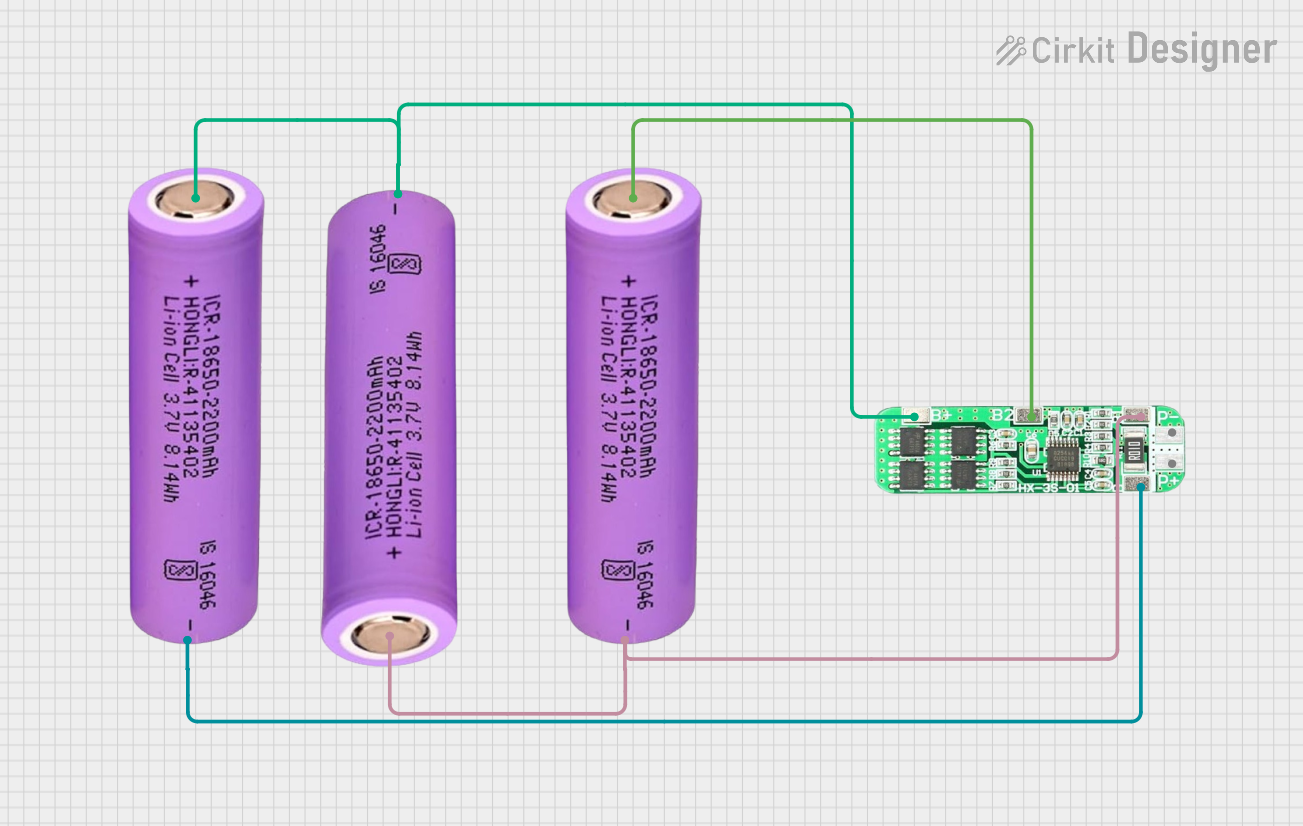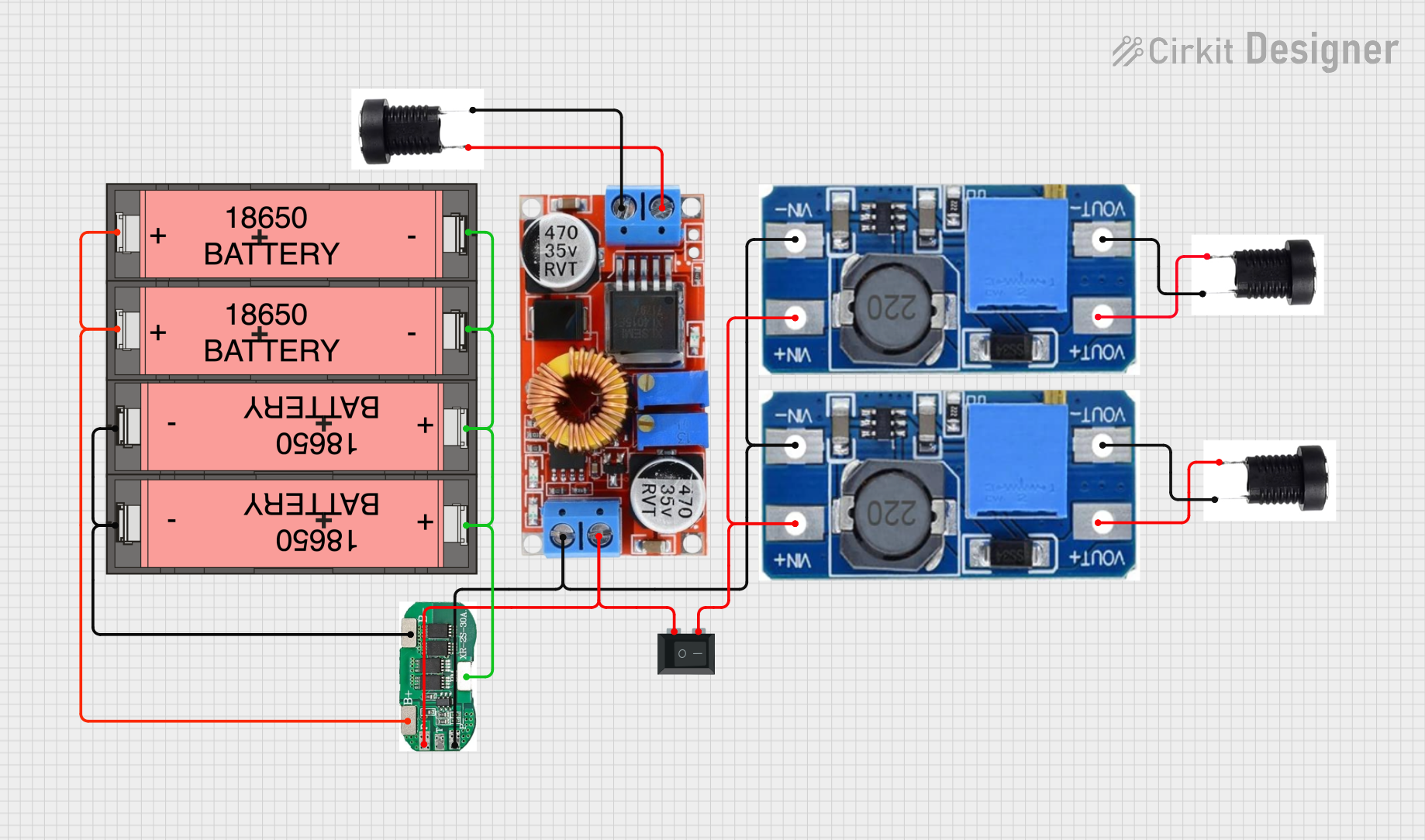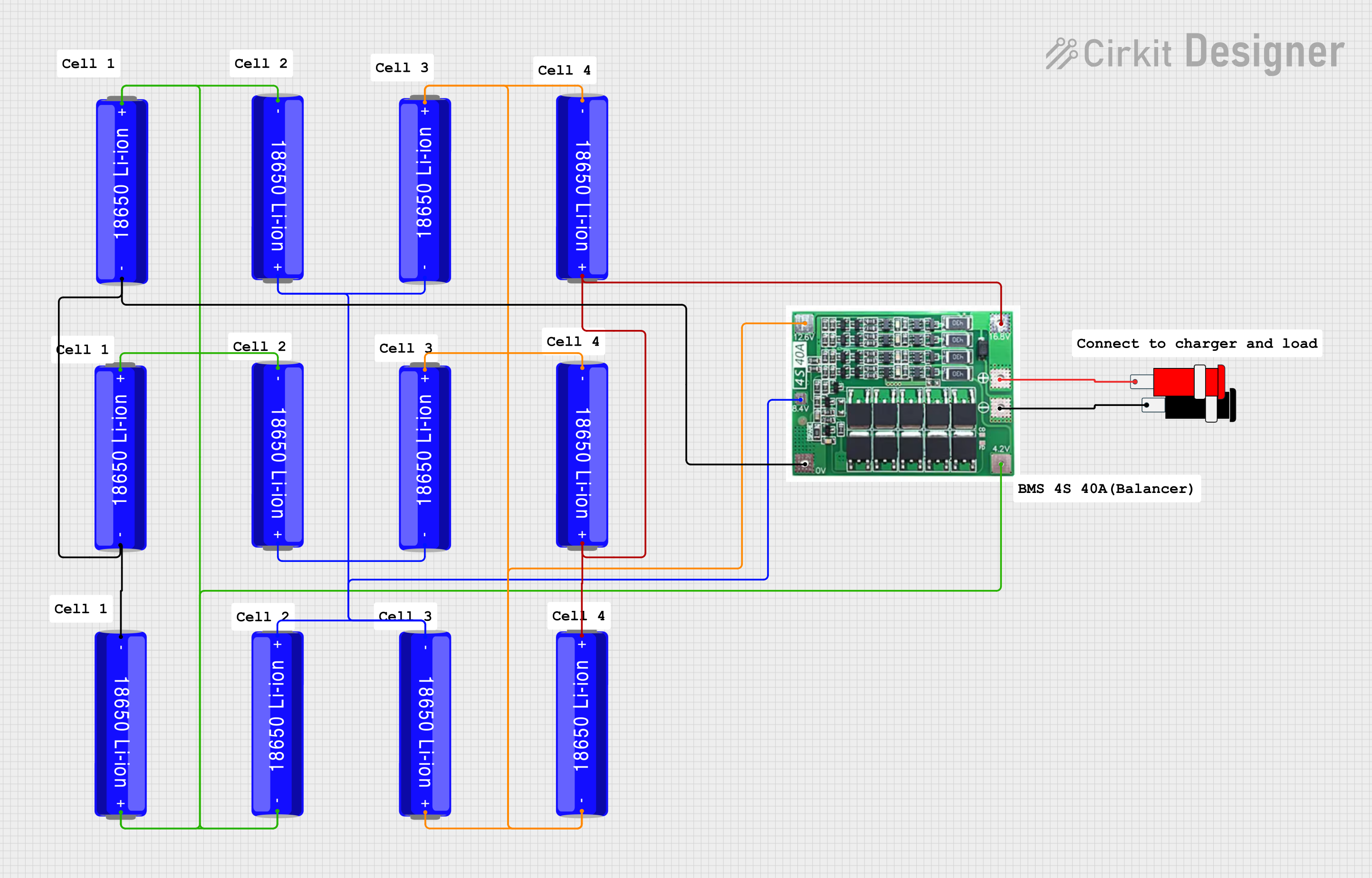
How to Use Battery 18650: Examples, Pinouts, and Specs

 Design with Battery 18650 in Cirkit Designer
Design with Battery 18650 in Cirkit DesignerIntroduction
The 18650 battery is a rechargeable lithium-ion battery commonly used in portable electronics and electric vehicles. Known for its high energy density and long cycle life, the 18650 battery is a popular choice for applications requiring reliable and efficient power storage. These batteries are cylindrical in shape and typically measure 18mm in diameter and 65mm in length, hence the name "18650."
Explore Projects Built with Battery 18650

 Open Project in Cirkit Designer
Open Project in Cirkit Designer
 Open Project in Cirkit Designer
Open Project in Cirkit Designer
 Open Project in Cirkit Designer
Open Project in Cirkit Designer
 Open Project in Cirkit Designer
Open Project in Cirkit DesignerExplore Projects Built with Battery 18650

 Open Project in Cirkit Designer
Open Project in Cirkit Designer
 Open Project in Cirkit Designer
Open Project in Cirkit Designer
 Open Project in Cirkit Designer
Open Project in Cirkit Designer
 Open Project in Cirkit Designer
Open Project in Cirkit DesignerCommon Applications and Use Cases
- Portable Electronics: Laptops, flashlights, and power banks.
- Electric Vehicles: E-bikes, scooters, and electric cars.
- Energy Storage Systems: Solar power storage and uninterruptible power supplies (UPS).
- DIY Projects: Robotics, drones, and custom battery packs.
Technical Specifications
| Parameter | Value |
|---|---|
| Nominal Voltage | 3.6V - 3.7V |
| Capacity | 2000mAh - 3500mAh |
| Maximum Discharge Rate | 10A - 30A |
| Charging Voltage | 4.2V |
| Charging Current | 0.5C - 1C (C = battery capacity) |
| Dimensions | 18mm (diameter) x 65mm (length) |
| Weight | 45g - 50g |
| Cycle Life | 300 - 500 cycles |
Pin Configuration and Descriptions
| Pin | Description |
|---|---|
| Positive | Positive terminal (+) |
| Negative | Negative terminal (-) |
Usage Instructions
How to Use the 18650 Battery in a Circuit
- Identify the Terminals: Ensure you correctly identify the positive and negative terminals of the battery.
- Battery Holder: Use a suitable 18650 battery holder to secure the battery in your circuit.
- Connection: Connect the positive terminal of the battery to the positive rail of your circuit and the negative terminal to the negative rail.
- Charging: Use a dedicated lithium-ion battery charger to charge the 18650 battery. Ensure the charger is set to the correct voltage (4.2V) and current (0.5C - 1C).
Important Considerations and Best Practices
- Avoid Overcharging: Overcharging can lead to overheating and potential battery damage. Always use a charger with overcharge protection.
- Avoid Deep Discharge: Discharging the battery below 2.5V can reduce its lifespan. Use a battery management system (BMS) to prevent deep discharge.
- Temperature: Operate the battery within the recommended temperature range (usually 0°C to 45°C for charging and -20°C to 60°C for discharging).
- Storage: Store the battery in a cool, dry place. If storing for an extended period, charge the battery to around 50% capacity.
Troubleshooting and FAQs
Common Issues and Solutions
Battery Not Charging:
- Solution: Check the charger and ensure it is functioning correctly. Verify that the battery terminals are clean and making good contact with the charger.
Battery Overheating:
- Solution: Ensure the battery is not being overcharged or discharged at a rate higher than its maximum discharge rate. Check for any short circuits in the circuit.
Reduced Battery Life:
- Solution: Avoid deep discharges and overcharging. Use a BMS to manage the battery's charge and discharge cycles.
FAQs
Q: Can I use an 18650 battery with an Arduino UNO? A: Yes, you can use an 18650 battery to power an Arduino UNO. However, you will need a voltage regulator to step down the voltage to 5V, which is the operating voltage of the Arduino UNO.
Q: How do I know when my 18650 battery is fully charged? A: A fully charged 18650 battery will have a voltage of 4.2V. Most lithium-ion chargers have an indicator light that shows when the battery is fully charged.
Q: Is it safe to use 18650 batteries in series or parallel? A: Yes, but it is important to use batteries with the same capacity and charge level. Additionally, use a BMS to ensure safe operation.
Example Code for Arduino UNO
Here is an example of how to use an 18650 battery to power an Arduino UNO with a voltage regulator:
// Example code to read analog input from a sensor powered by an 18650 battery
const int sensorPin = A0; // Analog input pin that the sensor is attached to
int sensorValue = 0; // Variable to store the value coming from the sensor
void setup() {
Serial.begin(9600); // Initialize serial communication at 9600 bits per second
}
void loop() {
// Read the input on analog pin 0
sensorValue = analogRead(sensorPin);
// Print out the value you read
Serial.println(sensorValue);
// Wait 1 second before the next loop
delay(1000);
}
Note: Ensure you use a voltage regulator to step down the 18650 battery voltage to 5V before connecting it to the Arduino UNO.
This documentation provides a comprehensive overview of the 18650 battery, including its technical specifications, usage instructions, and troubleshooting tips. Whether you are a beginner or an experienced user, this guide will help you effectively utilize the 18650 battery in your projects.